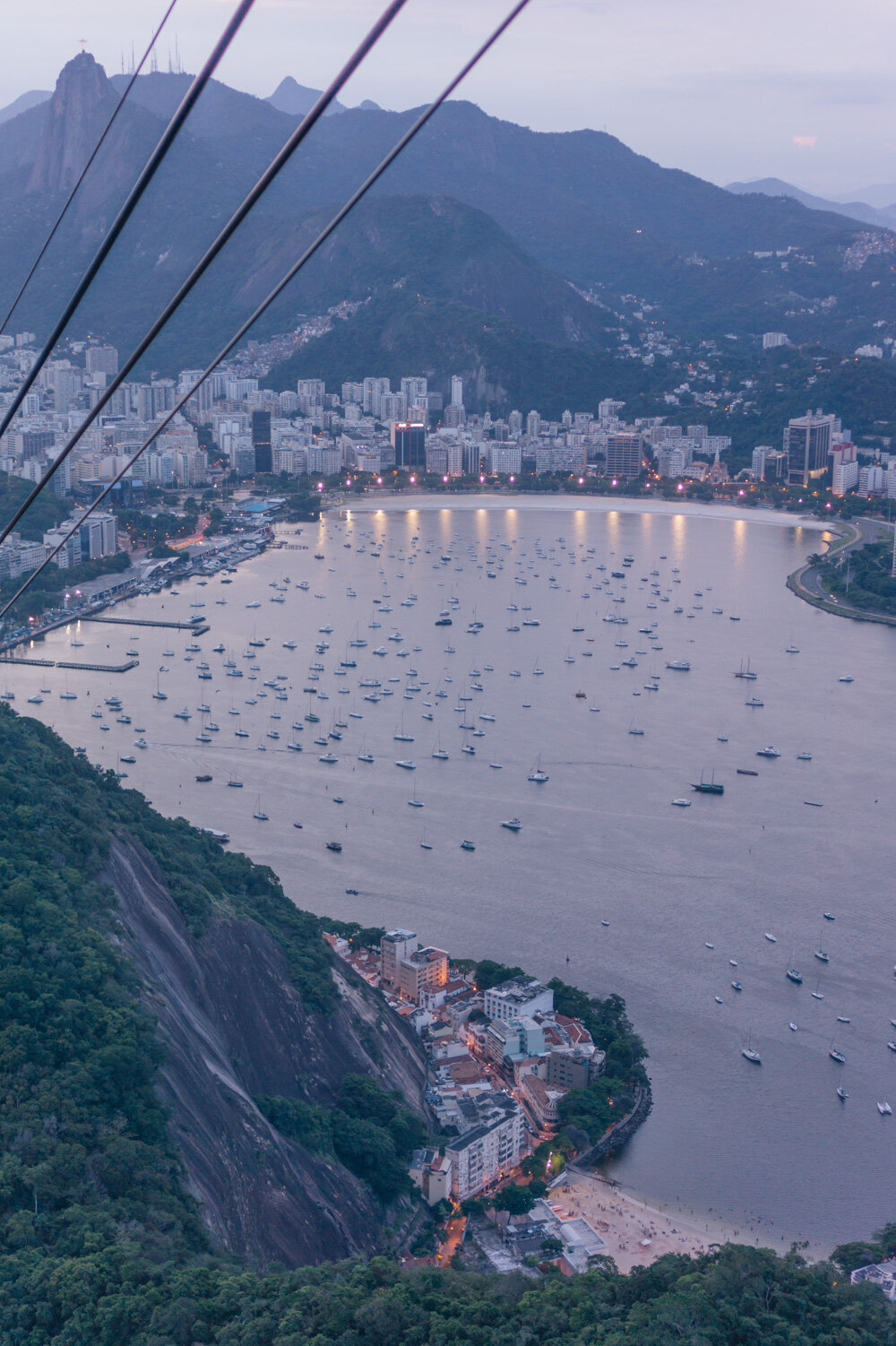City of Mountain, Beach, and Sky // Rio de Janeiro
We decided to go to Brazil kind of on a whim — we had both been wanting to go, then found relatively cheap tickets flying in to Rio De Janeiro and out of Sao Paulo on great dates. Such win. We also realized that we could be in Rio for Carnival (or Carnaval in Portuguese) for the same price, and thought that it would be a once in a lifetime opportunity and experience. It was.
Before going, we read up on travel safety tips and talked to Brazilian friends and coworkers about areas to spend time in and areas to avoid. Brazil has been politically unstable recently, and Rio highlights an incredible wealth disparity that has escalated the number of violent crime. Google "Is Rio safe," and you'll know what I mean (see here and here). While we were there, we didn't even see cell phones for the first 24 hours, and weren't sure if we could take ANY photos (so praise Jesus we were even able to get these).
At the same time though, Brazilians are so friendly. Our taxi driver, on the one-hour drive from the airport to our AirBNB gave us quite the tour of Rio in Portuguese, even though it was clear neither my boyfriend nor I spoke a word of his language. With our Spanish, we were able to pick up some words (like "favelas," "police," and "governor"), but we understood very, very little. Nevertheless, he enthusiastically described the many parts of his home city.
As we got closer to Copacabana, Rio's famous beach we were staying near, we began to see hordes of 13- to 25-year-olds in swimsuits and Halloween-like outfits.
It's a tradition for men to cross dress during Carnival, and we saw many men sporting tutus, skirts, and mermaid outfits.
Turns out, in 2014, there were more than 2 million people on the streets every day during the Carnival. The beaches were absurdly packed, with beach umbrellas stretching as far as the eye could see. #alloftheumbrellas
To avoid the beachy crowds, we headed to Leblon, the "hip, boutiques-heavy" neighborhood of Rio. Had anything been open (it was Sunday and Carnival), we would probably have really loved that area, but it was still a super nice area to walk around. The drive from Copacabana there also follows the edge of the Rodrigo de Freitas Lake, which locals told us to spend time at (but we didn't because we had no time).
We had also been told that these congregated block parties known as Blocos are "the way to experience Carnival," so, after brief respite from the crowds, we stopped by the largest blocos in Rio, with 300,000 people in Ipanema. Yes, 300,000 people.
Giant trucks were blasting music, trash was everywhere, and people were dancing and drinking as they followed the trucks down the street. There's a rope that defines the outer limits of the technical party (you have to pay to get inside the rope), but there was plenty to see even outside that.
The temperature was over 100 degrees, and with all the sweaty bodies pressing against us, we didn't stay long.
We also wanted to see the performers that prepare for Carnival, so we headed to the Sambadrome, the official venue of Rio Carnival. For more on that, see my post on Carnival. It was one of the best performances I've ever seen, and I would go back in a heartbeat.
After Carnival, we knew we had to spend our last day in Rio seeing the "touristy" parts, namely Christ the Redeemer and Sugarloaf Mountain. In our research, we found that there are several ways to get up the Christ the Redeemer mountain. The most touristy option is to take an old tram up, but that requires tickets purchased in advance, and you have to wait in long lines both to get up and to get down. The second option is to take a taxi up, but the taxi can only go so far up the mountain. The last stretch requires a separate bus that we would have to pay for at the top of the mountain. So we chose to take the third option, a van "package" that takes us up the mountain and included a ride to the actual statue.
It was unbearably hot at the top of the mountain, and the temperature difference between the shade and the sun was like 20 degrees. The sun, as we experienced it, had just fallen to the right of the Christ's head, and the statue's slanted shade was outlined and filled in by people. The only ones brave enough to stand in direct sunlight would take a picture, then hop back into the shade. It was incredibly amusing, and the views were worth it.
In prior research, we had determined that sunset is better seen from Sugarloaf Mountain than from the Redeemer, because you can watch the sun set over the city, instead of watching it set behind some mountains. Knowing we had to get to Sugarloaf Mountain by a certain time in order to properly see, film, and shoot sunset, we hurried down the mountain, got in a taxi, and made our way.
We took the cable car up (the line wasn't long), and watched the people hiking to the top of the mountain under us. At the top, we looked back at the city, and it was absolutely stunning.
The sun set behind some clouds, and we experienced one of the prettiest sunsets we had ever seen. It was like God had painted the sky just for us.
After we took all our photos, we just watched the sunset and enjoyed the view and each other.
It felt really good to just appreciate the view. We made our way down the mountain, and I reflected on what was so special about this city. Rio de Janeiro is such an incredible blend of mountains, city, and beach, intermingled in a way I had never seen before, and I can't wait to go back.





























